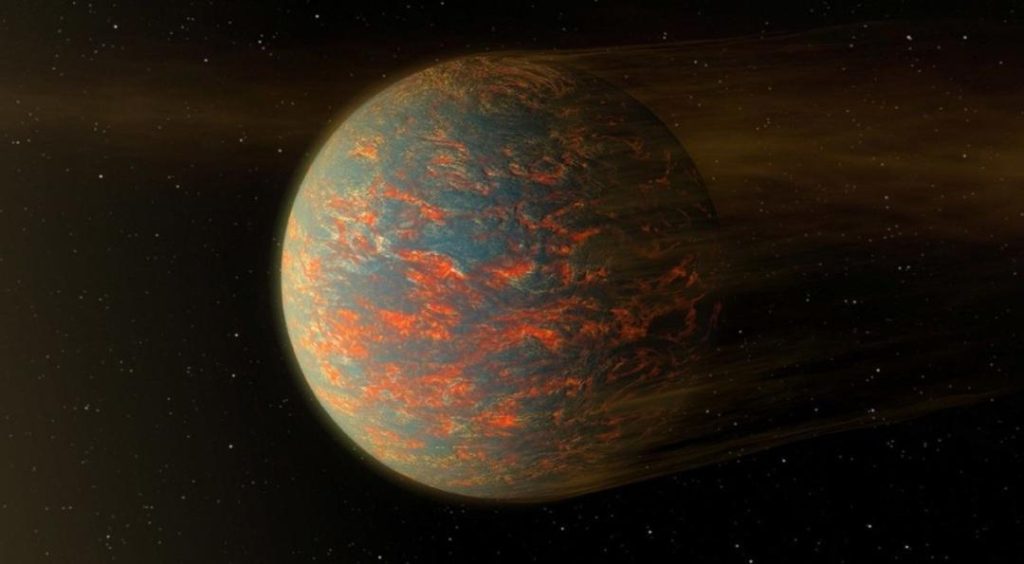
Newly-discovered super-Earth heats up & freezes every 300 days
In a recent groundbreaking discovery, scientists have found a new “super-Earth” orbiting a Sun-like star just 20 light-years from our own planet. What makes this exoplanet so fascinating is its unique orbit, which takes it on a journey from extreme heat to freezing temperatures every 300 days. This incredible phenomenon has left astronomers intrigued, sparking a flurry of questions about the potential for life on this extraordinary world.
A “super-Earth” is a planet that is larger than our own Earth but smaller than the gas giants, Neptune and Uranus. This new discovery, designated as TOI-1338 b, falls squarely into this category, measuring roughly 1.4 times the size of our own planet. Its host star, a G-type main-sequence star similar to the Sun, provides the perfect conditions for the super-Earth to thrive.
The orbit of TOI-1338 b is what sets it apart from other exoplanets. Rather than following a circular path around its star, this planet’s orbit is shaped like an oval. This eccentric orbit means that the planet’s distance from its star varies significantly throughout its year. When it’s at its closest point, the super-Earth is scorching hot, with surface temperatures reaching as high as 3,900°F (2,148°C). This is hotter than the surface of Venus, which is known for its sweltering heat.
However, as the super-Earth moves further away from its star, the temperatures plummet. The planet is plunged into a deep freeze, with surface temperatures dropping to as low as -400°F (-240°C). This is even colder than the surface of Neptune, the eighth planet from the Sun in our own solar system.
This extreme temperature fluctuation occurs because of the star’s varying brightness. As the super-Earth moves closer to its star, it’s exposed to more intense radiation, causing the surface temperature to soar. Conversely, when it’s farther away, the radiation is weaker, resulting in the freezing temperatures.
Astronomers have been studying TOI-1338 b using the Transiting Exoplanet Survey Satellite (TESS) and the Spitzer Space Telescope. By analyzing the light curves of the star, they were able to detect the transit of the super-Earth across its surface, allowing them to determine its size, orbit, and temperature fluctuations.
This incredible discovery has sparked a lot of excitement among scientists. While the extreme temperatures may seem inhospitable to life, there is still a chance that some form of life could exist on TOI-1338 b. After all, there are organisms on Earth that thrive in extreme environments, such as hot springs and freezing tundra.
The discovery of TOI-1338 b also raises questions about the potential for life on other super-Earths. Could there be other planets in the universe with similar unique orbits, hosting life forms that have adapted to these extreme conditions? The search for answers will likely involve further study of this exoplanet and others like it.
As scientists continue to unravel the mysteries of TOI-1338 b, we are reminded of the vastness and complexity of the universe. The discovery of this super-Earth is a testament to the incredible diversity of planetary systems and the potential for life beyond our own.






